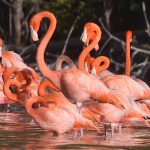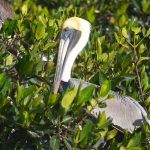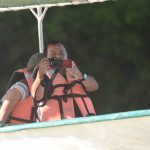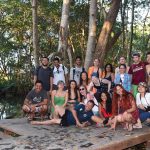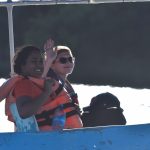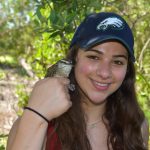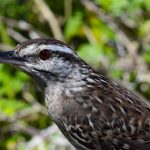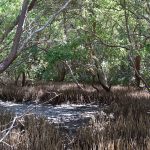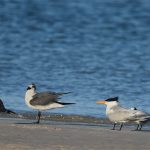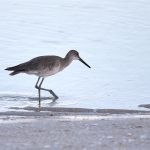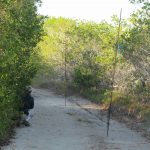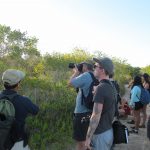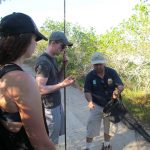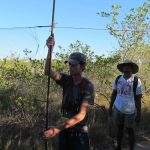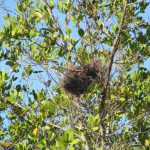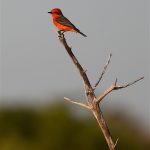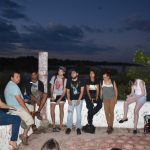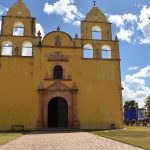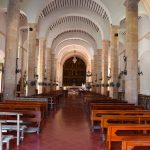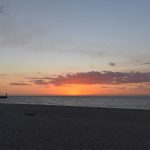Hello to all of those who are reading the blog and following along with our adventures!
Today was our last full day here in Celestún, and unfortunately also our last day of the biodiversity trip in Mexico in which we have learned so much. At 8 am we had breakfast and had a wide choice of fresh fruits to choose from, as well as some fresh juices. After breakfast we had some time to work on our other courses and take showers, and then we met at the beach at around 10 am to discuss how to write a good scientific paper, and Dr. Lougheed walked us through the requirements for the papers we will have to write, and how we can succeed on the and future papers.
After our discussion on best-practice for writing papers, we had some more time to work on other course work, but some of us decided to get in touch with the ocean biodiversity and go for a swim in the ocean. At 2 pm we made our way to the hotel restaurant to eat lunch, and we all had a few slices of pizza or the healthier salad option. We met at the beach again after lunch, but this time it was for a boat ride into the Ría Celestún (Celestún Estuary), to see flamingoes and other waterbirds, and to visit a cenote in the mangroves! This boat ride proved to be truly remarkable, even on such a windy day that made for quite a bumpy ride. On the way to the cenote, we were truly blessed to see several large groups of American flamingos! The sound of our boats scared the first group, and it took flight into the air to form a pink cloud in the sky, which was truly majestic. We found a second group that was much more tolerant of our present and we spent some time observing the perhaps 2-300 individuals. The American flamingo (Phoenicopterus ruber) is one of six recognised species of flamingo worldwide, and is found in the Galápagos Archipelago, northern coastal Brazil, Colombia, and Venezuela, Trinidad and Tobago, Cuba, Hispaniola, Bahamas, Virgin Islands, Turks and Caicos, and, of course, in the the Yucatán Peninsula (Ría Celeste). Flamingos have evolved myriad adaptations to their unique existence. Included in this is a unique beak morphology that is decurved with lamellae on both the upper and lower mandibles that facilitate selective filter feeding. We saw both adults with their intensive pink colouration and whiter juveniles. We also saw many brown pelicans and cormorants, many of which were sitting in the red mangroves eyeing us as we passed by them.
After witnessing this array of beautiful birds, we zipped to the cent, an up-welling of freshwater called the ‘Ojo de Agua Baldiosera’ where we would swim. On the way into the cenote we spotted a white egret. The water of the cenote was quite clear, and we could see many fish swimming around. We made sure that there were no crocodiles in the cenote, and then Dr. Lougheed, Jesus, and Javier led the way into the cenote by jumping in first.
We took a bunch of class photos in the breath taking mangrove area, and then hopped back into the boats to get dinner at the hotel. When we landed back on the beach we walked back to the hotel and watched the sunset, which just never gets old on the coast of the Yucatán. After eating a large dinner that included curry chicken and rice, we watched a tear jerking slideshow of pictures that Dr. Lougheed prepared, to look back on all of the memories we made, and adventures that we participated in over these last two weeks.
Tomorrow we will be on a plane back to Canada, where we will have to say all of our goodbyes and some of us will be heading in opposite ways back to our Universities.
Thank you for following our experience here in Mexico and know that your support is truly appreciated! See you soon!
Español
Hola a todos los que nos siguen en el blog y nuestras aventuras!
Hoy fue nuestro último día completo en Celestún y tristemente, también nuestro último día del curso de biodiversidad en México, en el cuál hemos aprendido mucho. A las 8am desayunamos una deliciosa variedad de frutas y jugos frescos. Después pasamos un rato estudiando para nuestras otras materias y darnos una ducha. A las 10 de la mañana, nos citaron para discutir sobre cómo escribir un buen artículo científico. El Dr. Lougheed nos orientó sobre los requisitos que necesitamos para preparar y escribir nuestros trabajos y de cómo podemos tener éxito en éste y otros artículos futuros.
Posterior a nuestra discusión de “buenas prácticas para preparar un artículo científico”, tuvimos más tiempo para continuar estudiando sobre las otras materias, pero algunos decidimos irnos a encontrar la biodiversidad de la playa, pero mejor, darnos un chapuzón en el mar. A las 2pm nos reunimos para comer en el restaurante donde comimos pizza deliciosa, acompañada de una ensalada fresca y saludable. Después de la comida, nos reunimos de nueva cuenta en la playa, pero esta vez para irnos a una expedición en lanchas a la Ría Celestún para ver los flamencos, otras aves acuáticas y un ojo de agua en los manglares. El viaje en lancha fue en verdad extraordinario a pesar del viento fuerte que provocó que las lanchas brincaran demasiado. A lo largo del viaje, encontramos varios grupos de flamencos, el ruido del bote delantero los ahuyentó, provocando una nube de color rosa cuando el grupo de aves volaba sobre nosotros provocando una escena majestuosa.
Encontramos un segundo grupo más tolerante a nuestra presencia y pasamos un buen rato admirando los 200-300 individuos. El Flamenco rosa (Phoenicopterus ruber), es una de las seis especies reconocidas de flamencos en el mundo, habiendo en el archipiélago de las Islas Galápagos, Costa norte de Brasil, Colombia y Venezuela, también en Trinidad y Tobago, Cuba, Hispaniola, Bahamas y las Islas Vírgenes, las te Turcos y Caicos y por supuesto en la Península de Yucatán. Los flamencos han evolucionado variadas adaptaciones para su sobrevivencia, incluyendo un pico con morfología única con lamelas a los lados del pico, tanto en la maxila como mandíbula para filtrar de manera selectiva los organismos que conforman su dieta. Observamos tanto adultos con su intenso color rosa, como juveniles más grisáceos y pálidos. Observamos también Pelícanos cafés y cormoranes en grandes números, muchos de ellos descansando en los árboles de mangle rojo, viéndonos a nosotros mientras pasábamos cerca de ellos.
Después de disfrutar esta extraordinaria variedad de aves, nos fuimos al cenote, un ojo de agua brotando dentro del manglar, conocido como Baldiosera, al cuál nos metimos a nadar. Observamos en el sitio una Garza blanca. El agua estaba muy clara y pudimos observar muchos peces alrededor. Nos aseguramos de que no había cocodrilos y entonces el Dr. Lougheed, Jesús y Javier fueron los primeros en brincar al cenote.
Tomamos un buen número de fotos del grupo en el hermoso paisaje de manglar y después subimos a las lanchas para regresar al hotel antes de la hora de cenar. Ya que llegamos, nos dejaron en la playa, desde donde caminamos al hotel disfrutando de un atardecer hermoso que no se repite día con día en la costa de Yucatán. Después de una cena deliciosa a base de diferentes tipos de curry con pollo, pescado y arroz, vimos un show de diapositivas ensamblado por el Dr. Lougheed con momentos desde el inicio hasta el final de nuestra aventura en las últimas dos semanas, lo que nos llenó de emociones tanto alegres como sentimentales por estar al final de nuestras dos semanas juntos.
Mañana estaremos volando de regreso a Canadá, donde tendremos que despedirnos entre todos e irnos cada quien a sus respectivas universidades.
Gracias por seguir nuestras experiencias en México y sepan que ¡apreciamos mucho su apoyo! ¡Nos vemos pronto!
